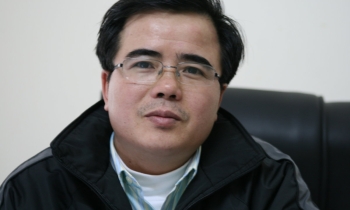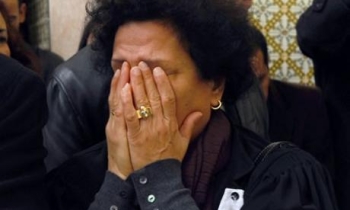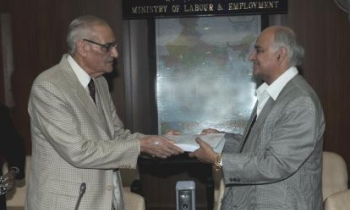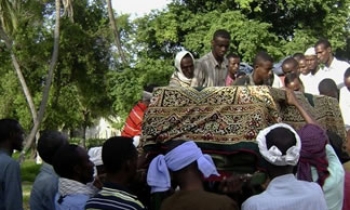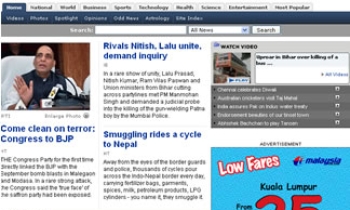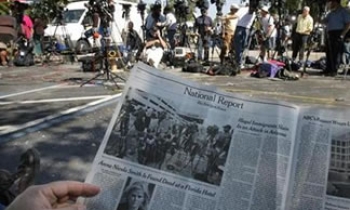The Association of Journalists Against AIDS in Tanzania (AJAAT), has published a gloomy report on the struggle against the HIV/AIDS pandemic at workplaces of media houses in the country.
The report follows a survey in 17 media houses based in Dar es Salaam with intention to establish whether media outlets had HIV/AIDS policies at their workplaces or programmes which need attention and serious action by media houses.
The rapid assessment showed that all workers in media houses are aware of the existence of HIV/AIDS but discrepancy is indicated in the level of knowledge of the biology of the disease and its impact as reflected in the survey findings.
In the assessment conducted in collaboration with Futures Group International that implements the Health Policy Initiative (HPI) under United States Agency for International Development (USAID) funding, majority of respondents admitted that they were ignorant of signs, which a person would have after living with HIV/AIDS for a number of years.
’’Only 11 of the 75 respondents indicated that they know when a person can start showing signs of full-blown AIDS, while the rest were completely ignorant of it’’ says AJAAT Executive Chairman, Simon Kivamwo in the assessment report.
On Voluntary Counselling and Testing (VCT) the assessment indicated that only 27 of the 75 respondents (35 men and 30 women) have ever done an HIV test, and some of them have done it more than three times.
It is encouraging to note that for the majority of those who have attended VCT, they have done it purely for purposes of knowing their health status, says Kivamwo in the report.
However, in general the assessment concluded that media workers are still not aware of the importance of testing for HIV and this is due to fear of stigma and discrimination from their colleagues and close relations.
On Policies/Guidelines on HIV/AIDS interventions at workplaces, it was found that media houses are unaware of the significance of having such such guidelines although such policies guide managements of media outlets in the provision of HIV/AIDS related prevention, care and treatment services.
As a result eighty nine (89) per cent of the respondents said there were no programmes or policies to assist media workers living with HIV/AIDS in their respective organizations.
A negligible number (2 respondents) indicated that employers provide a token amount of money to meet treatment costs and facilitate access to Anti-Retroviral (ARV), but not in a consistent manner.
’’Most of the media workers living with HIV had their costs being met by their families or by themselves’’ notes the assessment.
The assessment also established that none of the media houses contacted had an organized system that ensured access to authentic information on HIV/AIDS. In fact, only 6.6 percent of the respondents indicated that their workplaces have a modicum of activities.
These enabled workers to enjoy access to information on the disease through workshops and seminars organized by other organizations dealing with HIV and AIDS.
The organizations also supplied posters and flyers which are placed on walls in some of the media houses.
Another salient feature in the rapid assessment was stigma and discrimination surrounding people living with HIV/AIDS-PLHA.
Sixty (60) of the media workers interviewed said they have never witnessed incidences of stigma and discrimination even though cases of finger-pointing, fear in mixing with PLHA colleagues and employment termination were reportedly common.
On gender relations the assessment confirmed that women in the media are highly vulnerable to HIV. Respondents gave a number of reasons to this vulnerability:
* Women are likely to use sex to bribe their bosses as a surety for their employment;
* Women reporters are exposed to news sources that are likely to lure them into sex because of their money and influence;
* Women working in commercial/marketing departments are sexually vulnerable and are forced to trade sex for commercials/advertisements for their media;
* Women working in media get lower pay compared with men.
To this end AJAAT suggests that any consideration to have an effective workplace policy on HIV and AIDS must address the issue of unequal gender relations and male chauvinism.
Based on its findings, AJAAT has recommended that media owners and managements including managing editors must ensure that their workplaces have minimum standards of protection of their workers from HIV and AIDS embedded in workplace policy/guidelines.
They must also explore avenues to work with other stakeholders to put in place wide-ranging policies on HIV/AIDS and Gender and begin discussing appropriate HIV/AIDS measures of interventions.
This is in addition to investing in voluntary counselling and testing services in a bid to check the spread of the HIV virus that causes AIDS; built workers capacity on stigma and discrimination and put in place proper mechanisms for treatment, care and support for media workers living with HIV/AIDS.
On the part of media workers, they should establish committees to engage media owners and/or managements in workplace policy dialogue and in the promotion of HIV/AIDS education/sensitization programmes.
AJAAT has called on media workers to self motivate themselves to learn more about HIV and AIDS and to extend genuine care and support to colleagues living with HIV/AIDS in order to reduce stigma and discrimination which is a silent killer.
Media workers are also required to advocate for a liaison desk responsible for coordinating and following up the establishment of HIV/AIDS and gender policies/guidelines.
AJAAT has also made recommendations to stakeholders including Tanzania Commission for AIDS (TACAIDS), National AIDS Control Programme(NACP), UN Agencies, development partners and NGOs engaged in HIV/AIDS prevention, care, treatment and support.
According to AJAAT their contribution should be provision of financial and technical support to media houses to institute HIV/AIDS and gender workplace policies/guidelines; to organize and implement in-house HIV/AIDS information, education and communication programmes and to promote sensitization of media owners and managements.


